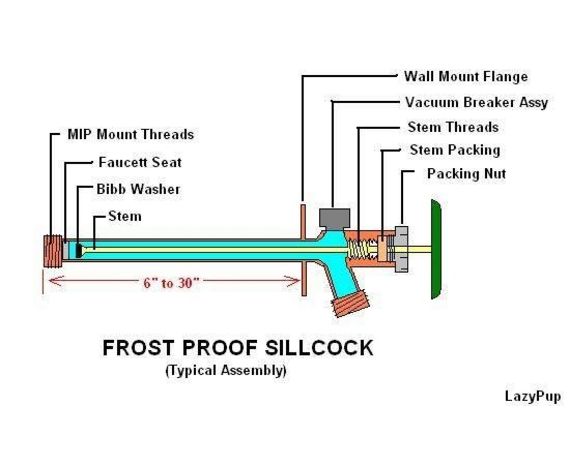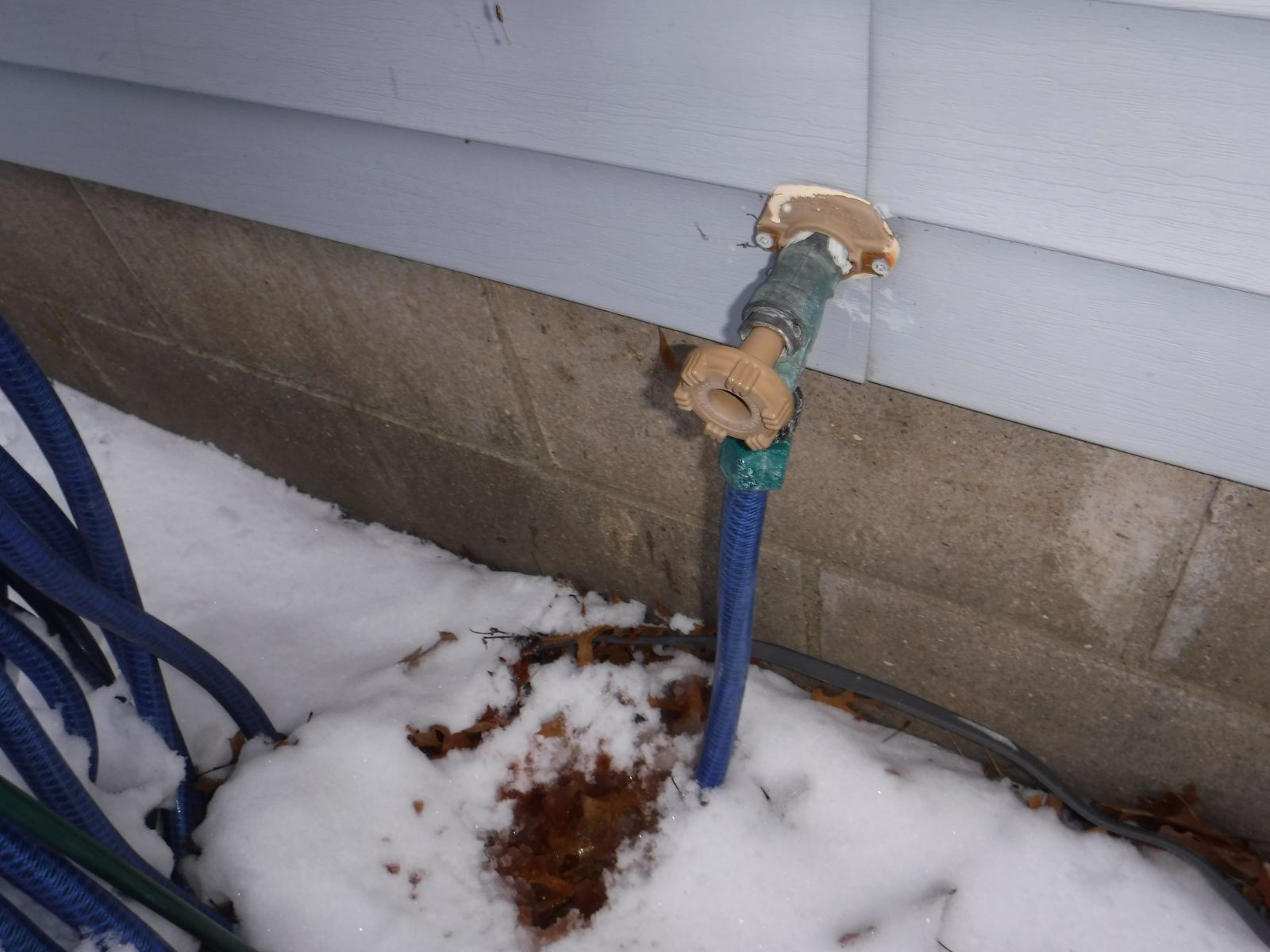Frost free garden hose bibs
Posted: 7 years, 6 months ago
As a home inspector, I see firsthand the effects water has on houses when left uncorrected or allowed to be somewhere it shouldn't. Often, I see issues with frost free garden hose faucets. Here are the most common issues and what to do about them.
How they work-
The "faucet" or valve is inside the heated space of the home, allowing the assembly to remain unwinterized hence the nickname frost free. The tube and stem are available in different lengths depending on the width of the exterior walls. Twisting the handle moves the bibb washer away from the faucet seat allowing water to flow. Water stops flowing when the handle is twisted the other direction, moving the bibb washer against the bibb seat again. The tube assembly then drains any water, preventing the tube from damage by freezing water.
Leaving a hose attached in freezing weather is generally a bad idea, as this prevents the faucet tube from draining. This may allow the water in the tube to freeze bursting the tube and will allow water to run inside the wall cavity or wherever the tube is installed. Obviously, this is generally bad for a house. If the tube bursts, the whole assembly will need to be replaced.

Another feature of most frost free faucets is a "vacuum breaker." This feature prevents a backflow fron a connected hose if the house water supply pressure is less than the pressure in the hose. This is a potential source of contamination of the potable water supply. Occasionally these assemblies wear out and leak as well.
Normal maintenance is required when the bibb washer wears out, this will cause the faucet to drip. Occasionally the vacuum breaker assembly will wear out and start to leak, this is also cause for maintenance. Normal maintenance is performed by anyone handy, with most parts available at a local hardware or box store.
The ask of this home inspector is Please dont leave hoses connected if the weather may turn cold, and if you see water when you shouldn't please fix it promptly!
Share on Twitter Share on Facebook Back to Blog

